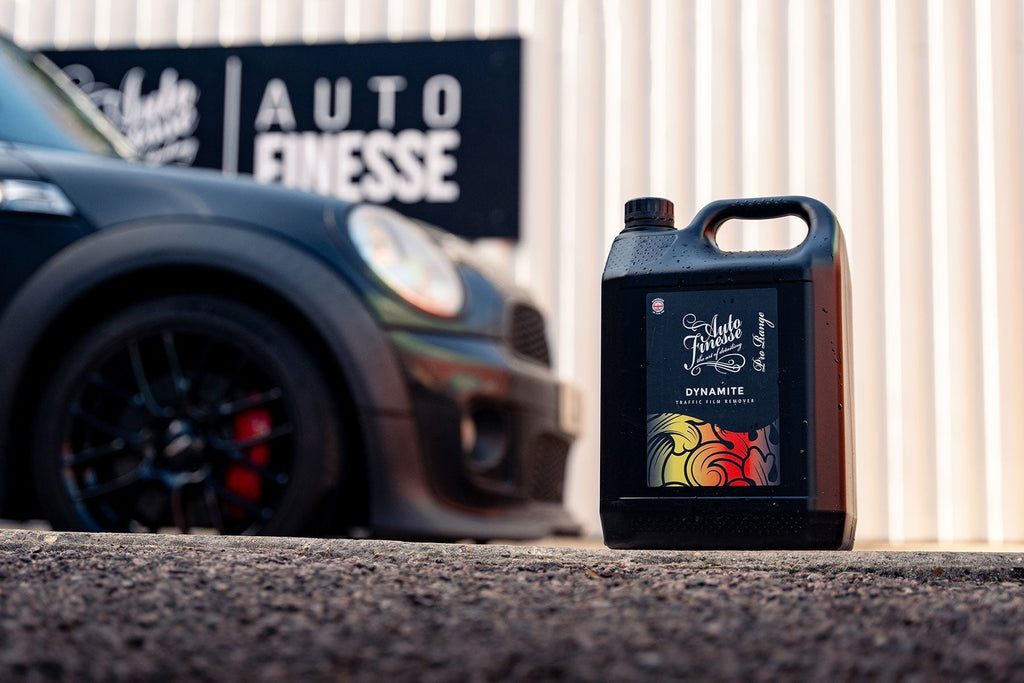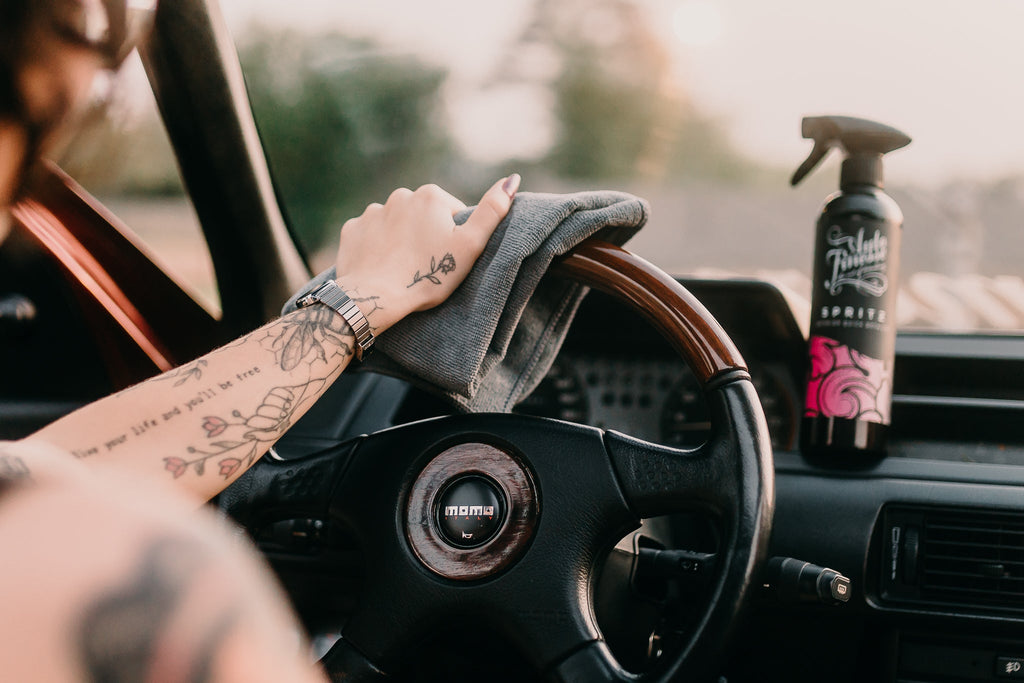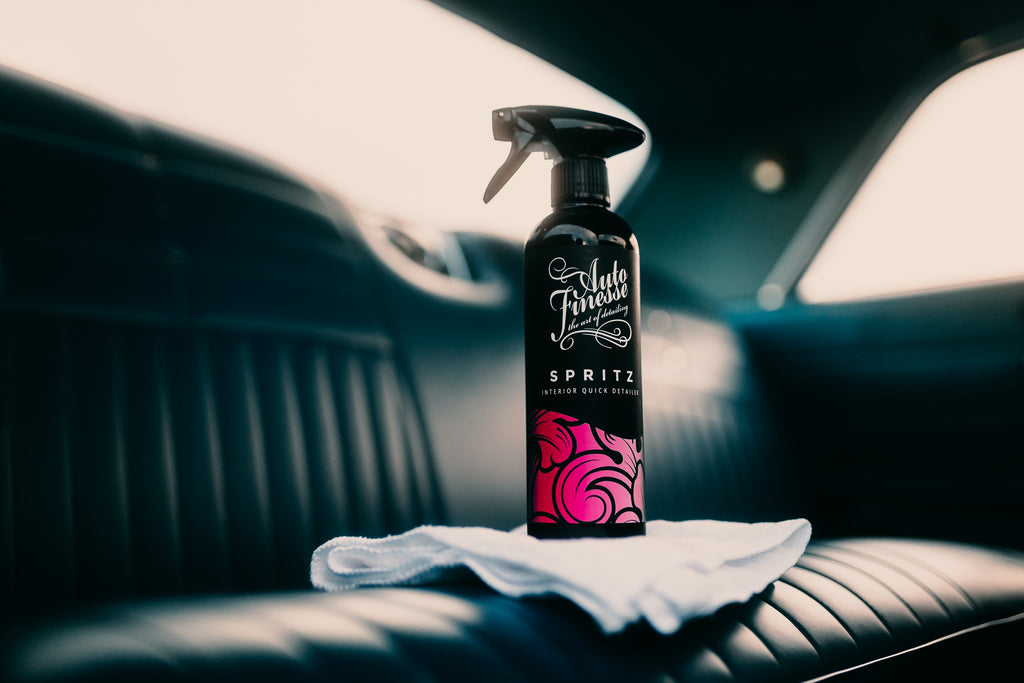Clay Bars: Explained






The Auto Finesse® Detailing Clay Bar comes as a 200g block and is made from an ultra-fine grade of natural Kaolin clay.... See product details More
We get loads of questions at Auto Finesse, asking if it's really worth it to clay bar your car. Well, the simple answer is yes. We know it takes a while (if done properly), but it's so well worth it and we'll try to stretch to just how worth-it it is in this piece.
Clay barring your paint will massively improve on the surface's finish and feel. A car will collect tar from the road, as well as air and water pollutants, unless of course you have a trailer queen that's generally stored in an air-tight container, which, oddly, most of us don't! Most of this filth starts pretty fine but builds up over time and sometimes you can't even see it but we can guarantee if left it'll start to eat away at your paint, or at the very least oxidise through any protection. A good wash won't be enough to completely cleanse your paintwork before applying any protection, so using a clay bar is a must before any wax or sealants or other chosen protection is used.

So, just what is a clay bar? Well, it feels like a bit like plasticine and has a putty-like consistency, which works to pick up any contaminants on a paint's surface (if used in conjunction with a good lubricant, of course).
Once you've gone clay bar you'll never go back. Or something like that. Basically, you think you've done a thorough wash, spent hours applying a snow foam, then giving the body a thorough clean using the best car shampoo and wash mitt, as well as the two-bucket method, but as soon as you even do one panel using a clay bar it's bloody filthy. And we're not over exaggerating, either, especially if it's something new for you and your car. If you'd been clay-barring your car every month, then that's a different matter, as you're keeping on top of the tar contamination.
Now, we've been banging on about how clay bars pull contamination from a paint's surface but we haven't told you the best bit… it does ZERO damage to your paintwork. It sounds like an abrasive procedure, but it's really very gentle, and as long as you seal it well following the clay bar treatment your car will be in another league.


Before using a clay bar, make sure you've washed the car otherwise you'll be dragging surface filth across the paint and that's just going to cause swirl marks. We don't need to tell you again, do we?! Following a good snow foam and wash, make sure to use our ObliTARate Tar & Glue Remover or Iron Out Fallout Remover to further help rid the car of any iron and tar fallout that may be on the paint's surface. It'll just make the clay'ing part a little easier, and probably less grim.
When using a clay bar, it's important to remember to use lubrication - one that's specifically formulated for use with clay bars - no entering your Mrs' drawers and all that. Not to sound salesy, but we do the Glide lubricant which works well with any paint-specific clay bar.
Make sure you're not in direct sunlight when attempting to clay bar your car and try not to do it in really high heat. If you're using a brand-new clay bar, cut the bar into quarters. This is a bit of a tip to save buying a brand new one should you end up dropping it on the floor. If you do happen to drop it (it happens to the best of us) then you must throw it out straight away. If it starts out a little stiff… so to speak… make sure to knead it as much as possible - it'll be easier to work across the paint if it's more pliable.

Now you're ready to begin. Spray the clay bar lubricant directly onto a small section of a panel, working to complete the whole panel before moving onto the next one.
Make sure to lube up your clay bar, too. Then with light-medium pressure, move the clay across the paint in circular motions, until the whole panel is complete, removing any embedded road grime as you go. Be sure to keep track of whether the panel you're working on is drying out or not. Complete the panel as you would wax it. Once a panel is complete, wipe over it with a microfibre cloth to buff off any possible residue and move onto the next panel.








The Auto Finesse® Glide clay bar lubricant has been designed to make clay barring your car much easier and efficient. It... See product details More


Obviously, it goes without saying, if you pick up lots of harsh particles, either fold your clay bar over so you expose fresh clay, or pick them out if possible. Never use a clay bar that is quite clearly contaminated - it'll do you no favours.
Following a good full buff-off with a quality microfibre cloth, you're ready to polish, wax or seal your paint. This stage is especially important. You've probably just spent hours clay barring all of the contamination from your paint, don't undo all that hard work by not protecting your efforts.
Once you've clay barred and protected your paintwork, you should only need to do it twice a year - once before winter and once after. Obviously, you're welcome to do it more often. This is simply the minimum required. Before winter is important because of the harsh weather it'll encounter, and after winter is equally important because of the crap we come across on our roads through the winter months; salt, grime, brake-dust etc.
Well, that's us signing off. We'd love to see some of your results, just tag # in your pics on Instagram or Twitter and we'll check them out!












